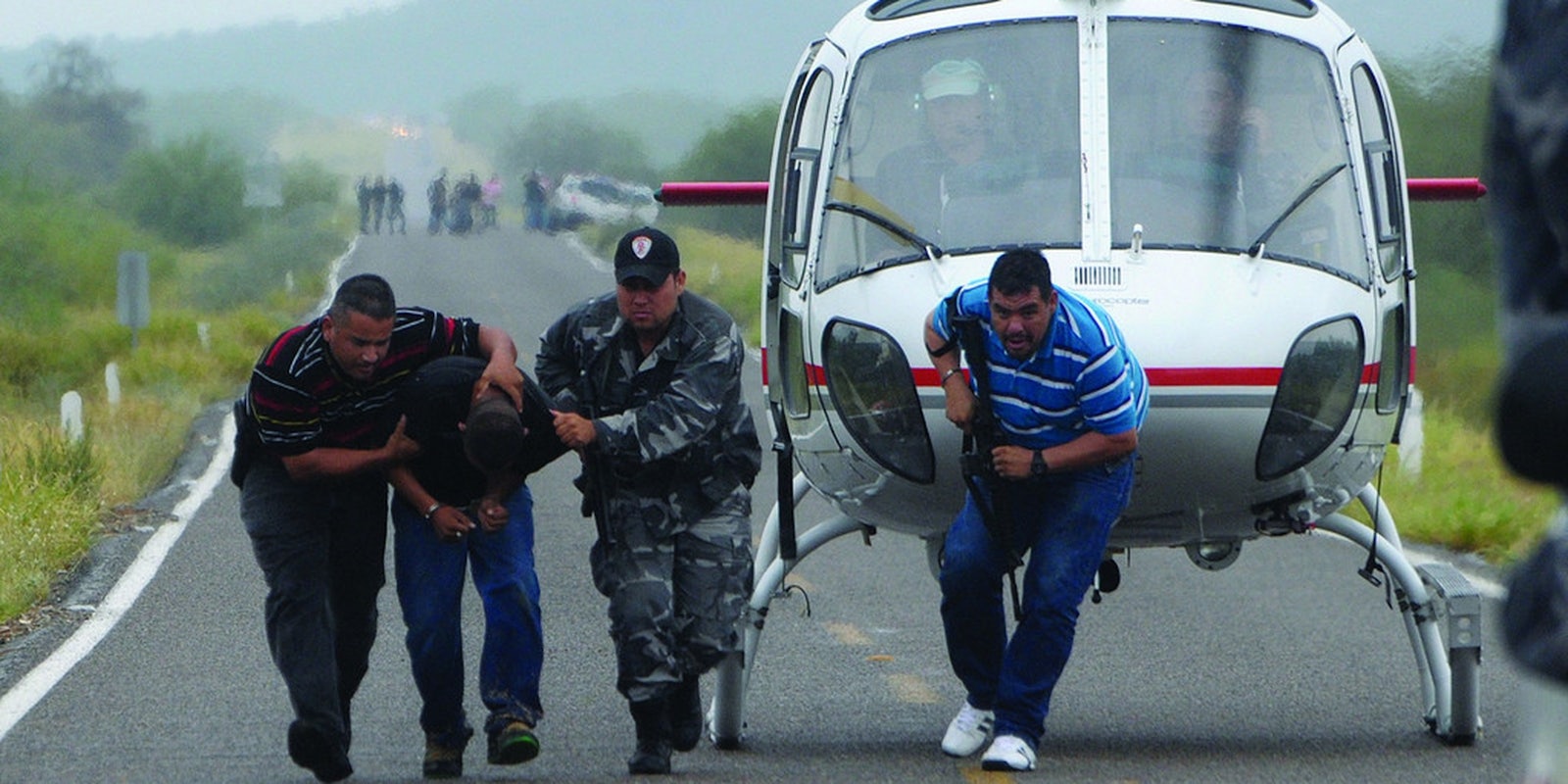Violence is consuming the Mexican city of Reynosa, just south of the Texas border, as street battles have reportedly claimed the lives of over 80 people, including high-ranking police officers and drug cartel leaders. You only have to go to YouTube to watch the war from the front line.
High-intensity battles involving the Gulfo Cartel, the Zeta Cartel, and Mexican federal authorities are being recorded and broadcast to the world in full by cartel gunmen and residents caught in the crossfire. The battle videos are gaining hundreds of thousands of views.
Reynosa is located in the Mexican state of Tamaulipas, one of the most highly trafficked regions in Mexico for drugs headed to the United States. Tamaulipas was a starting point for the country’s bloody narcowars that have lasted for years on end and continue bloodily to this day.
The cartels’ smartphone videos, posted to accounts with thousands of subscribers, capture the battles complete with a soundtrack of booming .50 caliber rifles and the cackling laughter of gunmen.
The video above chronicles a firefight from the front lines. According to one translation, a man is warning his comrades to “Get down, you’re going to get shot, god damn it!”
“Shoot another .50 [caliber] at them,” he screams before laughing wildly, “another one!”
The gunmen appear to be using a powerful Barrett M82 anti-materiel rifle—a firearm designed to take down equipment like tanks—to kill enemy soldiers.
By one minute into the video, the battle has become so intense that one man tells his fellow shooters to hold fire and and let their enemies spend their ammo.
The Mexican government says that the catalyst for this round of violence is the government “squeezing” the cartels, arresting Gulfo bosses and causing a civil war for power within the group. The rival Zeta cartel has attempted to take advantage of the Gulfo’s weakness by mounting an invasion of enemy territory.
“It’s worse than ever,” a local woman told the Guardian. “This is a failed state with no law and no authority.”
Local authorities are almost powerless in the face of an all-out cartel army, so they rely on the Mexican military to push back.
On May 9, five cartel gunmen and a Mexican army soldier were killed during firefights captured in the video above.
One of two shootouts occurred in the relatively well-off Las Fuentas neighborhood in the western part of the city. Soldiers and gunmen traded fire so intensely that the Mexican military had to call in two helicopters with snipers to eventually route their enemies.
The Friday firefights are believed to have killed Galindo “El Mellado,” one of the founders of the Los Zetas paramilitary drug cartel that has carried out much of the violence in Reynosa and Tamaulipas at large.
There are countless videos recording the violence because the battles take place in the open. On the afternoon of Monday, May 5, an intense battle took the lives of at least five gunmen outside the local Walmart.
When the shooting broke out, Walmart shoppers and nearby drivers took to Twitter to report news of the fatal fight to the world.
The YouTube accounts posting videos of the narcowar are just one piece of the cartels’ surprisingly big social media presence. While older Mexican drug kingpins shun social networks, the younger generation tends to flaunt their wealth on sites like Instagram and even post regular duckfaced selfies that can Mexican authorities identify and track them down.
Like television before it, YouTube is being used to document and propagandize wars around the world from Mexico to the Syrian civil war. With even narcosoldiers possessing the strong desire to overshare everything about their lives, viewers can now see the wars in Mexico closer than ever before.
Photo via Knight Foundation/Flickr (CC BY-SA 2.0)


